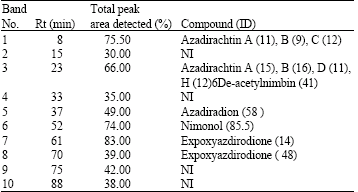Research Article
Effect of Neem (Azardirachta indica A. Juss) Seeds and Leaves Extract on Some Plant Pathogenic Fungi
Department of Botany and Microbiology, College of Science, King Saud University, Riyadh, Saudi Arabia
E.M. El-Kholie
Department of Botany and Microbiology, College of Science, King Saud University, Riyadh, Saudi Arabia












